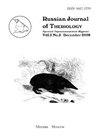New records of Holocene polar bear and walrus (Carnivora) in the Russian Arctic
IF 0.6
4区 生物学
Q4 ZOOLOGY
引用次数: 6
Abstract
This article discusses recent finds of Holocene polar bear and walrus from the northern regions of Russia. The ulna of a polar bear was found on Vaygach Island and radiocarbon dated to 1,971 +/- 25 BP (OxA-23631). This calibrates to 430-540 AD, taking into account the marine reservoir effect. The size of the bone is similar to that of a recent Ursus maritimus. The locality of the fossil bone is within the modern species range, which developed about two millennia ago. In 2014 a walrus tusk was found on the coast of New Siberia Island and is radiocarbon dated to 5,065 +/- 35 BP (GrA-62452). This calibrates to 3,510-3,370 BC, taking into account the marine reservoir effect. Its size and morphology are identical to that of an adult male of the subspecies Odobenus rosmarus laptevi. This subspecies populates the eastern parts of the Kara Sea, the entire Laptev Sea and the western parts of the East Siberian Sea. This new discovery could mean that populations of O. rosmarus laptevi inhabited the waters near the New Siberian Islands during the Middle Holocene, and that the present-day coastline of the Siberian Arctic Islands was already formed at that time.俄罗斯北极全新世北极熊和海象(食肉目)新记录
本文讨论了最近在俄罗斯北部地区发现的全新世北极熊和海象。在Vaygach岛上发现了一只北极熊的尺骨,放射性碳年代为1971+/-25 BP(OxA-23631)。考虑到海洋储层效应,这一校准值为公元430-540年。这块骨头的大小与最近的一只马里蒂穆斯类似。骨骼化石的位置在大约两千年前发展起来的现代物种范围内。2014年,在新西伯利亚岛海岸发现了一根海象象牙,放射性碳年代为5065+/-35 BP(GrA-62452)。考虑到海洋储层效应,这一校准值为公元前3510-3370年。它的大小和形态与一个亚种Odobenus rosmarus laptevi的成年雄性相同。该亚种分布在喀拉海东部、整个拉普捷夫海和东西伯利亚海西部。这一新发现可能意味着,在全新世中期,罗斯马鲁斯·拉普特维的种群居住在新西伯利亚群岛附近的水域,而当时西伯利亚北极群岛的海岸线已经形成。
本文章由计算机程序翻译,如有差异,请以英文原文为准。
求助全文
约1分钟内获得全文
求助全文
来源期刊

Russian Journal of Theriology
Agricultural and Biological Sciences-Animal Science and Zoology
CiteScore
0.90
自引率
33.30%
发文量
0
期刊介绍:
The Russian Journal of Theriology publishes papers on all aspects of mammalian biology: taxonomy, zoogeography, ecology, behavior, morphology, development, physiology, paleontology, and evolution. Studies of extinct as well as extant taxa are included. Reviews are also published; these may be invited by the Editorial Board.
 求助内容:
求助内容: 应助结果提醒方式:
应助结果提醒方式:


